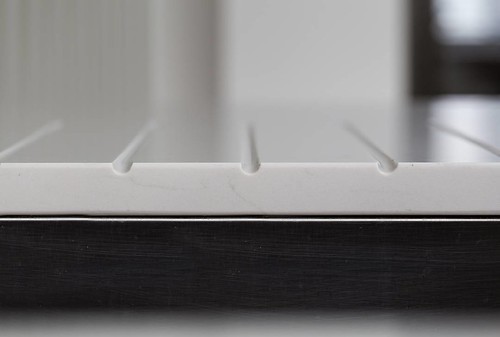test was used. Urinary Phytate Level and Valvular Calcification Fig 2. Urinary phytate levels for subjects with mitral annulus calcification and without MAC. Statistics. Values are expressed as mean SE. Comparisons between groups were performed using Mann-Whitney U test. p < 0.05 vs. No MAC. Discussion In this study we demonstrated a significantly inverse correlation between urinary phytate level and MAC. Phytate is a naturally occurring component in the diet and the FDA classifies it as GRAS. It is a highly polar substance, and its oral bioavailability is very low because of limited absorption, partly due to metabolic dephosphorylation during the first hepatic pass. Previous research indicated that a maximum of 2% oral bioavailability, and that increasing oral intake had little effect on maximum plasma values . In several aspects, phytate resembles some bisphosphonates, which also have high polarity and poor absorption. However, bisphosphonates are non-hydrolysable pyrophosphate derivatives that have long physiological half-lives. Other research indicated that urinary phytate levels reflect the phytate status of an organism, and that there is a good correlation between plasma and urinary levels of phytate. Phytate in humans and other mammals occurs in intracellular and extracellular compartments. Intracellular phytate occurs following sequential phosphorylation of lower phosphoinositides, but its physiological role remains unclear. There is apparently no exchange of phytate between the intracellular and extracellular 9 / 13 Urinary Phytate Level and Valvular Calcification Statistics: Univariate and multivariate binary logistic regressions were used to identify risk factors associated with presence of MAC. Multivariate analysis was performed using the stepwise backward method. The major sources of dietary phytate are whole grains, legumes, beans, and vegetable seeds. It has been estimated that the daily intake of phytate on the basis of western style diets varies from ~ 0.32.6 g and in a global range from 0.1804.569 g, strongly depending on the diet selected; low in normal western diets and high in vegetarian diets. Phytate is predominantly present in unprocessed food, but can be degraded during processing. Under heat treatment up to ~ 100C phytate is quite stable. For decades phytate has been regarded as an antinutrient, it may inhibit the absorption of some essential trace elements and minerals, although only under mineral malnutrition would lead to calcium, iron and zinc deficiencies. The trace elements and mineral malnutrition is produced under non varied and non balanced dietary conditions. The complex interaction between food compounds makes difficult to accurately determine the exact effects of these relationships, i. e. with carotenoids or vitamin C on mineral bioavailability. In a previous study we found that Mediterranean diet high in PubMed ID:http://www.ncbi.nlm.nih.gov/pubmed/19729642 whole cereals, legumes and nuts compared to Mediterranean diet low in these phytate-rich foods  increased significantly the urinary phytate excretion in humans. These previous studies and the results presented PubMed ID:http://www.ncbi.nlm.nih.gov/pubmed/19728371 here support the view that dietary consumption of phytate is crucial for maintaining adequate physiological levels of this compound, and that a phytate-rich diet may help to protect against valve calcification. In fact, the reduced phytate consumption in many industrialized countries could be partially MedChemExpress GS-4059 responsible for the increasing prevalence of vascular and valve calcification in these cou
increased significantly the urinary phytate excretion in humans. These previous studies and the results presented PubMed ID:http://www.ncbi.nlm.nih.gov/pubmed/19728371 here support the view that dietary consumption of phytate is crucial for maintaining adequate physiological levels of this compound, and that a phytate-rich diet may help to protect against valve calcification. In fact, the reduced phytate consumption in many industrialized countries could be partially MedChemExpress GS-4059 responsible for the increasing prevalence of vascular and valve calcification in these cou
M2 ion-channel m2ion-channel.com
Just another WordPress site
